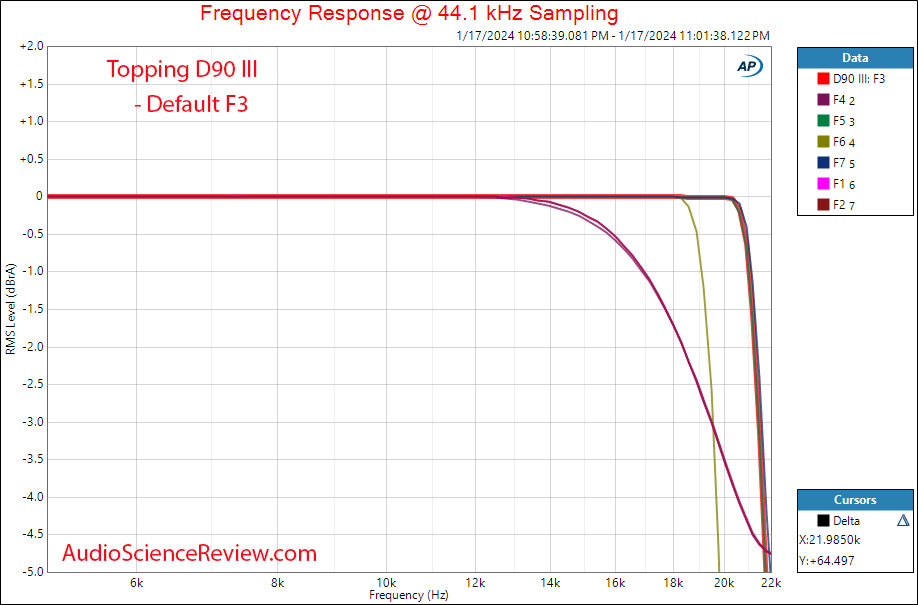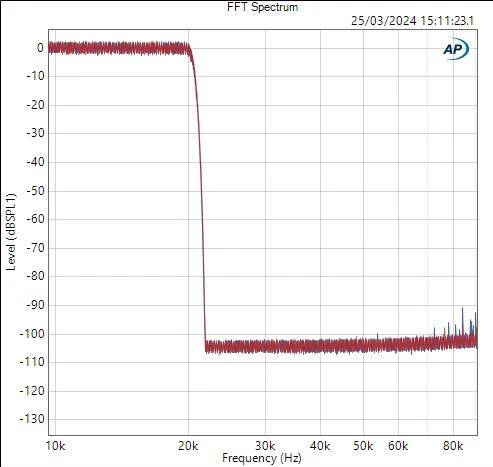while the focusrite clarette test definitely shows that the ADC portion is "better" for this type of work you can still clearly hear a degredation imo
You’re joking? What “type of work” do you think requires looping back a recording from a DAC to an ADC 400 times? It can happen in professional mixing and mastering that this type of loop-back occurs once or twice, in edge cases possibly as many a 5 or 6 times but again, this test was 400 times! And as a consumer, why would you be doing even one loop-back, let alone 400?
imo we cant exclude the DAC as long there wasnt a comparison between different DACs, so my guess is both ADC and DAC play a role here together, tho maybe the first ADC was a particular bad example, as far i know most preamps also include a subsonic filter which could play another role here
Huh, the difference was drastically reduced using a different ADC, how does that not demonstrate the difference was mainly due to the ADC? And even using your own logic, your “guess”/conclusion is nonsense: If (according to you) “
we can’t exclude the DAC as long as there wasn’t a comparison between different DACs”, then you also cannot “guess”/conclude they “
both play a roll together” for exactly the same reason, there was no comparison!
i hope we can atleast agree that the differences at 400x cycles is "pretty audible" if you have a trained ear, so is my assumption right that 200x cycles would still give you 50% of the audible change? (and therefore 40 cycles 10% ?)
We can agree that the difference at 400 loop-backs was “pretty audible”, however, it’s still easily recognisable and the difference is astonishingly tiny considering that’s 400 loop-backs, 800 conversion processes! I would have thought the audible difference would have been far greater. Lastly, where does your “
40 cycles” (80 conversions) come from? When a consumer is playing a digital audio file why would there be more than one single conversion (from digital to analogue) and, what percentage would 1/800 of a relatively small difference be?
im not exactly sure how preinging adds up from filters but i guess every cumulative cycle would add +3db where the inital cycles adds in comparison "more" than that, so the difference from original to the first cycle is probably a bigger difference than the second cumulative cycle to the first
So if every cumulative cycle “
would add +3dB” and there are 400 cycles, how many dB of pre-ringing would that be in total?
goldensound made some files where you can compare a single reconstruction filter if you are curious, imo also a single reconstruction can be audible and it has nothing todo with using a "worse DAC" than others...
According to his own explanation/description of his test, the only difference within the audible band (<20kHz) between the reconstruction filters he tested was dither that was below -100dB. He doesn’t say exactly what the level was, but even if we take a level higher than he is asserting (-100dB), then at a reasonable peak playback level (say 85dBSPL), that dither noise would be at -15dBSPL and there’s only one anechoic chamber in the world where noise at -15dBSPL would be above the noise floor of the room, but of course he wasn’t in Microsoft’s multi million dollar anechoic chamber! And even if he were, that would still be below the noise floor of his amp + transducers, and even if we ignore that problem as well (!) and assume he has some magical amp and transducers, with an effectively non-existent noise floor, it would still be many times below the human hearing threshold anyway!
Instead of using your brain to come up with nonsense, why don’t you use it to learn and understand some simple, basic facts?
G

































